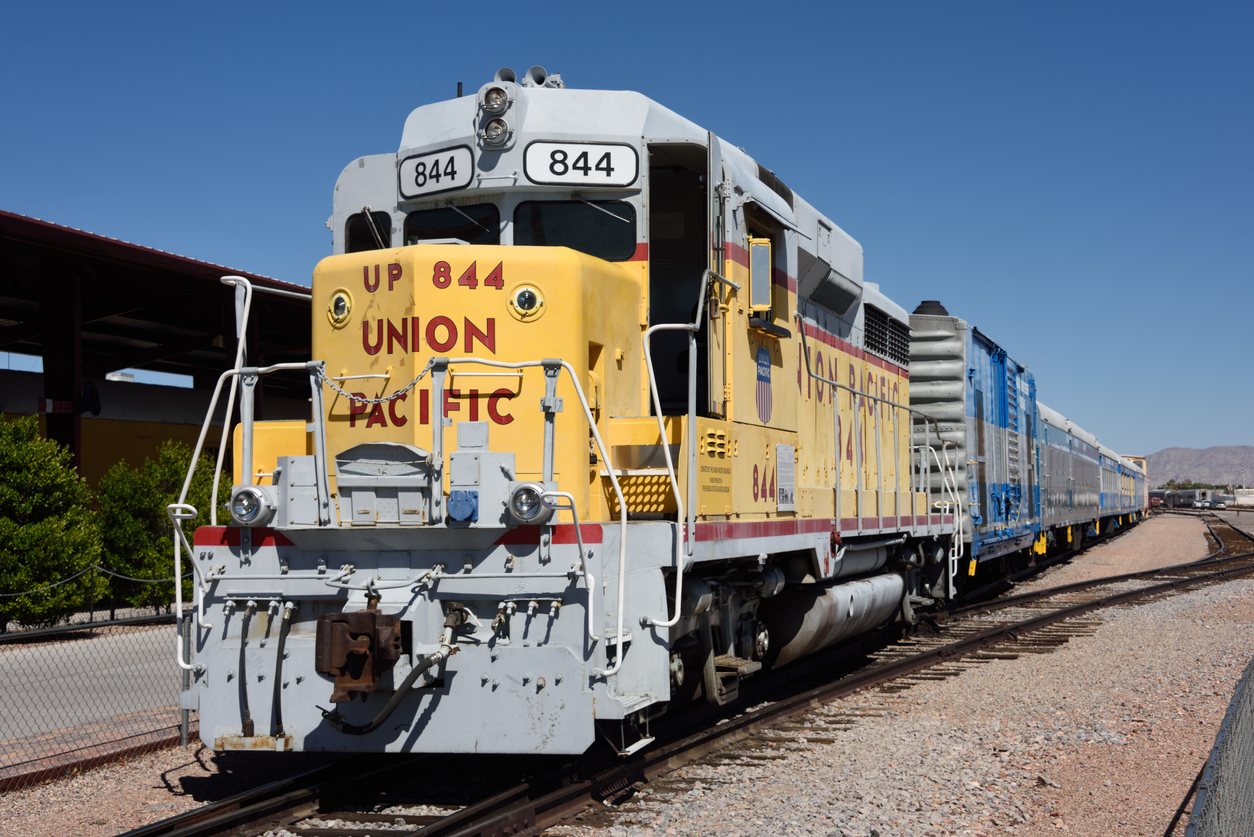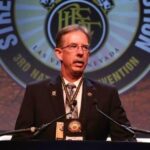Nevada’s rail plan in flux

Nevada has a railroad plan. But will its implementation be stifled by an unwilling partner?
There has been much talk about the need to utilize railroads in moving a greater proportion of passengers and freight. Doing so is seen as crucial to the achievement of certain policy and climate initiatives. For many, the question is, how do we make this happen? And what may get in the way?
First, some history. State Rail Plans were established by the Passenger Rail Investment and Improvement Act of 2008. Submission of these plans to the U.S. Department of Transportation, while not mandatory, is encouraged under federal statutes established by the act. The statutes also set minimum standards for what should be included in the plans. Nevada's first State Rail Plan was submitted in 2012. An update was drafted and submitted this year.
The 2021 Nevada State Rail Plan established the goal of exceeding the minimum standards for a state rail plan established under statute. The fully realized plan would deliver on this goal, not only providing a detailed reference of Nevada's rail resources and establishing means for greater utilization, but also establishing the goals set forth in the plan as a key part of efforts to move Nevada forward from the pandemic-created recession.
Resulting from the involvement of more than 200 stakeholders, the plan provides the framework for increased utilization of existing infrastructure available for use by rail shippers, expanding future rail-served development and laying the long-term groundwork for a future direct rail connection between the northern and southern population centers of the state — which has not existed since the early part of the 20th century. Chapter 3 of the plan establishes a Passenger Rail Strategic Plan within the state, while Chapter 4 establishes the Nevada Strategic Freight Rail Plan.
Implementation stands to play a pivotal role in future growth and diversification of Nevada's economy. Moving freight and passengers off Nevada's highways and onto rail in accordance with the plan will produce benefits by reducing traffic congestion and erosion of our highways while reducing fuel consumption and the production of greenhouse gasses. In just three freight-flow corridors, the plan identifies the opportunity to potentially eliminate more than 130 million kilograms of CO2 emissions annually by moving this freight from highway to rail. The plan looks at ways of accomplishing this not by pitting rail against trucking, but by identifying and synchronizing methods of best utilization of both modes.
In implementing plans such as this, money is always an issue. (Any idea is a good idea until it involves the expenditure of public money.) While the pursuit of public-private partnerships may be desirable in funding some plan goals, the plan largely identifies potential sources of investment capital which could be used to fund expansion of the state's rail infrastructure.
Costs aside, while implementation of the plan's goals will provide myriad benefits to Nevadans, there exists a potential obstacle which could inhibit its implementation. That obstacle is likely something few might realize — the existence of a potentially unwilling partner.
Success in attracting and retaining new rail business will depend on the provision of timely and effective service. Unfortunately, the major rail carrier operating in the state, whose provision of such service is vital, has adopted an operating model known within the industry as “precision scheduled railroading”, more widely referred to by the acronym PSR.
While it sounds like something that would optimize efficiency in rail transportation, nothing could be farther from fact. PSR has nothing to do with either precision or scheduling. In fact, it is a method of operation which attains certain financial benchmarks sought by hedge funds holding large blocks of railroad stocks at the expense of providing adequate service to rail customers. The result of this operating model, currently embraced by six of the nation's seven Class 1 railroads, is substantially degraded service.
The degradation of service to rail customers both here in Nevada as well as across the nation has not gone unnoticed in Washington, D.C. It has been the subject of numerous hearings before both Congress and the Surface Transportation Board, the federal body with oversight authority of railroad rates and service.
In Congress, U.S. Rep. Peter DeFazio, chairman of the House Committee on Transportation and Infrastructure, has recognized the problems along the nation's rail networks resulting from PSR. He has been the driving force behind initiating an investigation by the General Accounting Office into the effects of this business model and has pushed for the inclusion of certain policies within the House's infrastructure legislation to address problems evidenced by testimony before his committee. At the Surface Transportation Board, Both Chairman Martin Oberman and Vice Chairman Robert Primus have recently spoken vociferously at several trade conventions regarding their discontent with the negative effects on rail service PSR has created as well as possible actions the STB may take to force changes in the railroads' operations and improvement of service to rail customers.
Improvement of service to rail customers should be of concern to Nevadans for two reasons. First, supply chain difficulties are resulting in skyrocketing shipping rates that contribute to inflation along with contributing to the shortage of availability of certain goods; these difficulties are being exacerbated by the Class 1 railroads' abuse of their monopoly power in prioritizing Wall Street financial objectives over providing efficient rail freight service. Second, as previously referenced, the unlikelihood of attracting and retaining new freight business to rail due to substandard service from Class 1 carriers combined with the likely opposition by these carriers to new passenger rail service as has been seen in other areas of the country will inhibit Nevadans from reaping the benefits which would result from successfully implementing the Nevada State Rail Plan.
Author’s note: To learn more about the Nevada State Rail Plan, visit NDOT's State Rail Plan website at https://www.dot.nv.gov/mobility/rail-planning/state-rail-plan.
Matt Parker is a professional locomotive engineer who serves as chairman of the Nevada State Legislative Board for the Brotherhood of Locomotive Engineers and Trainmen.
Jason Doering is a professional locomotive engineer who serves as chairman and director of the Nevada State Legislative Board for the International Association of Sheet Metal, Air, Rail, and Transportation Workers-Transportation Division.

